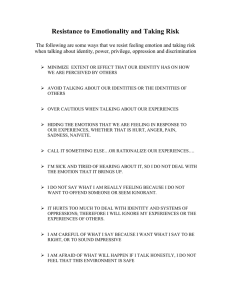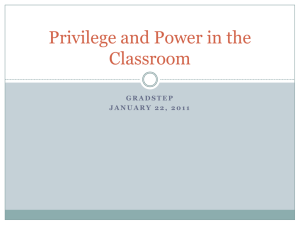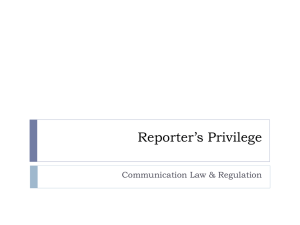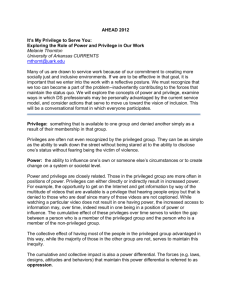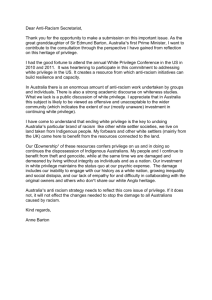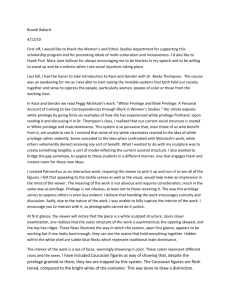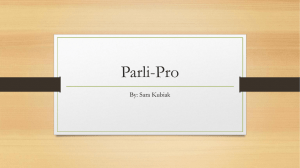What Else is in My Invisible Knapsack?
advertisement
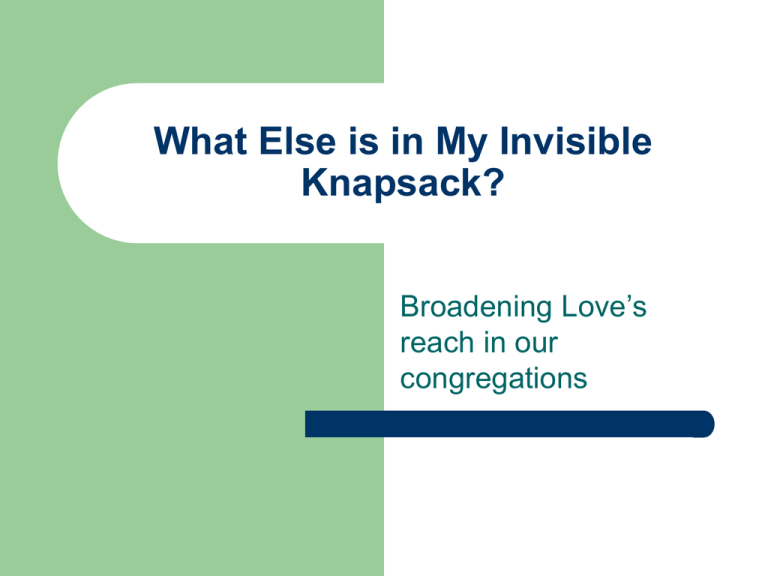
What Else is in My Invisible Knapsack? Broadening Love’s reach in our congregations Pivotal Notions Society uses similar mechanisms to create social identities based on difference Privilege works similarly regardless of the basis of privilege Anti-Oppression tools may be useful across oppressions Note: “Similar” does not mean “the same” Who are you? How do you think of yourself? Good listener Silly sense of humor Highly analytical Baseball fanatic Who do ‘they’ say that you are? “The media typically describe people according to certain categories…. How would the media categorize you?” From a recent telephone poll Society’s favorite boxes Gender Race and Ethnicity Sexual Orientation Physical and Mental Abilities Age Class Social Construction of Identity “Social construction means that society tends to divide people into arbitrary groups (e.g., black/white, able-bodied/non-able bodied). These categories become so taken for granted that it is assumed that they represent absolute reality. The categories created can divide groups into those viewed positively and those negatively stereotyped… “ Both/And Many of us are part of the dominant group for some identities and the non-dominant group for others. Origins of the “Invisible Knapsack” “White privilege is like an invisible weightless knapsack of special provisions, maps, passports, codebooks, visas, clothes, tools, and blank checks.” Peggy McIntosh Hidden Privilege We are not supposed to notice where we have privilege. We think it’s normal. How would my life be different If I had a different Gender? Race or ethnicity? Sexual Orientation? Physical or Mental Ability? Examples of Ableist Privilege Television, movies, and advertisements often show people who look like me. Examples of Ableist Privilege I can dress in a hurry or talk to myself without people attributing it to the pitifulness of my disability. Examples of Ableist Privilege I can do well in a challenging situation without being called courageous. Unmasking Privilege Matters “To redesign social systems we need first to acknowledge their colossal unseen dimensions.” Peggy McIntosh

